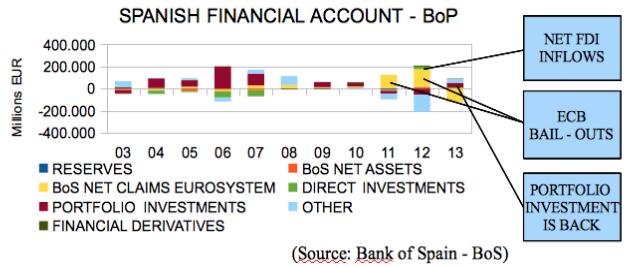IRR and Other ‘Damned Lies’ Book Collection Authored by Brian K Lee, MBA, PRM, CMA, CFA eBook : Lee, Brian: Amazon.in: Kindle Store
IRR and Other ‘Damned Lies’ Book Collection Authored by Brian K Lee, MBA, PRM, CMA, CFA eBook : Lee, Brian: Amazon.in: Kindle Store
July 19, 2022 Comments Off on IRR and Other ‘Damned Lies’ Book Collection Authored by Brian K Lee, MBA, PRM, CMA, CFA eBook : Lee, Brian: Amazon.in: Kindle Store

IRR measures the return potential of the project, while not considering the involved funding costs (i.e. WACC). NPV incorporates both in a single metric (following the EVA concept!). As an example, suppose a manager is aware of that investing in a conservative venture, such as a bond funding or another project with no threat, yields a known rate of return. When analyzing a new venture, the supervisor might use the conservative venture’s rate of return because the MARR. Often companies use their weighted common value of capital as the hurdle rate.
Will a conflict exist between the NPV and IRR?
A conflict will exist between the NPV and IRR methods, when used to evaluate two equally risky but mutually exclusive projects, if the projects' cost of capital is less than the rate at which the projects' NPV profiles cross.
If a corporation invests in positive NPV projects, wealth must increase for shareholders. In the calculation of NPV, both after cash flow and before cash flow over the life span of the project are considered. Estimate the required return for projects of this risk level.
For the evaluation of projects, capital budgeting techniques such as NPV, IRR, Pay-back Period Method and Accounting Rate of Return are being used for decision-making. In addition to these Real-options, analysis is one method, which can help finance managers to make decisions with respect to multi-period investment projects. Real-options analysis is preferred to NPV method as it considers the managerial options, which NPV method essentially neglects. The best part of real options is that it looks at capital expenditures as multi-year programs of investment rather than as a single project. In our calculation, there may be an assumption that the cash flows might be reinvested on the identical discount rate at which they’re discounted. In the NPV calculation, the implicit assumption for reinvestment fee is 10%.
FAS 133 undertakes to link the hedged item and the hedge contract incurred so that the gains/losses in the transactions are recognized in real-time basis. FAS 133 has identified fair value accounting and deferral accounting as the two methods that can be used for hedge accounting. The new accounting guidelines are complex and could immobilize finance and accounting personnel who try to come to grips with Hedge Accounting. Still it’s a ritual that has to be gone through whether one likes it or not. Like the proverbial “the chicken is coming home to roost”, the past has ultimately caught up and it’s the day of reckoning. Find the present value of the cash flows and subtract the initial investment.
Jobs By Companies
Accounting profit is based on currently accepted accounting rules while economic profit is based on cash flows. If the first cash flow is positive, it means the investor needs money and is looking for a loan, the lower the IRR the better since it represents the interest rate the investor is paying. If you need to calculate the net present value with irregular cash flows, i.e. cash flows occurring at random times, the calculation is a bit complex. The Facilities Provider, ABC Companies or any of its third party service providers and processor bank/merchants etc. shall not be deemed to have waived any of its/their rights or remedies hereunder, unless such waiver is in writing. No delay or omission on the part of Facilities Providers and ABC Companies, in exercising any rights or remedies shall operate as a waiver of such rights or remedies or any other rights or remedies. A waiver on any one occasion shall not be construed as a bar or waiver of any rights or remedies on future occasions.
Most companies use a 12% hurdle rate, which is based on the fact that the S&P 500 typically yields returns somewhere between 8% and 11% . Companies operating in industries with more volatile markets might use a slightly higher rate in order to offset risk and attract investors. Which one of the following projects – A, B, C, or D – should be accepted? The expected return on the market is 16% and the risk-free rate is 6%.
Under the RADR approach, we should accept a project if its net present value calculated using a risk-adjusted discount rate is positive. Each firm should have a different required rate of return because firms are not alike with respect to risk and have been created historically by projects taken that differ with regards to risk. In the case of capital rationing, a company is compelled to invest in projects having the shortest payback period. ___ is a project whose cash flows are not affected by the accept/reject decision for other projects.
Why is there a conflict between NPV and IRR?
When analyzing a typical project, it is important to distinguish between the figures returned by NPV vs IRR, as conflicting results arise when comparing two different projects using the two indicators. Typically, one project may provide a larger IRR, while a rival project may show a higher NPV.
As the company is a zero tax company for seven years , depreciation and the tax effect on the same are not relevant for consideration. Nine Gems Ltd. will be a zero-tax company for seven years in view of several incentives and allowances available. A project’s net present value is defined as the sum of the discounted value of all receipts minus the sum of the discounted value of all expenditures. Purchasing Machine Y will be riskier as NPV is negative as high as ₹ 28,954 while if Machine X is purchased, the NPV can be negative only ₹ 4,560.
What is Excel Data Financial Analysis?
By constraining the decision variables to 0 or 1, the integer linear programming model can handle almost any kind of project interdependency. The decision tree should be properly graphed indicating the decision points, chances, events and other data. Thus the depreciation base of the new machine will be its original conflict between npv and irr cost i.e. From PQR Ltd’s point of view the leasing terms offered by MGM Leasing gives the least Net Present Value. PQR Ltd is not getting tax shield on leasing, depreciation and interest because of heavy losses incurred in the earlier years. With proper negotiations , the leasing terms can be reduced marginally.
It is widely used in capital budgeting to establish which projects are likely to turn the greatest profit. A division of the firm will always have a required rate of return different from the firm’s overall weighted average cost of capital because the risk of the division always differs from that of the firm. Internal rate of return of an investment is the rate of interest at which NPV is 0. It is the rate value for which the present values of the fine cash flows exactly compensate the negative ones. When the discount rate is the IRR, the investment is perfectly indifferent, i.e. the investor is neither gaining nor losing money.
A drawback of using the IRR technique is that it does not account for the venture dimension when evaluating tasks. Cash flows are simply in comparison with the quantity of capital outlay producing those cash flows. MIRR adjusts the IRR to correct these points, incorporating the cost of capital as the speed at which cash flows are reinvested, and present as a single worth.
The allocation of funds to the projects 1,3 and 5 will give NPV of Rs. 1,76,000 and Rs. 1,50,000 will remain unspent. As the NPV of cash in flow of Machine –S is higher than that of Machine –R, the choice should fall on machine –S. The company has an offer for sale of Machine-R at Rs. 1,00,000.
Conflicts between NPV and IRR:
Unfortunately, IRR project ranking rules the financial landscape. This book is written to set the record straight and to provide proper insight into how to correctly use IRR. Take a set of five projects A,B,C,D, and E for which investment outlay, expected annual cash flow and project life are as below. In the net present value cash flows are assumed to be re-invested at cost of capital rate. The costs are forecasted in rupees of constant purchasing power. Finally, IRR does not consider price of capital and might’t examine initiatives with different durations.
- As the discount rate increases, Project C’s NPV will fall at a faster rate, due to compounding effect.
- As the company is a zero tax company for seven years , depreciation and the tax effect on the same are not relevant for consideration.
- If there is more than one sign change in the cash flows, IRR may not exist.
- Please also read the Privacy Policy for more information and details as provided on the Website.
It is difficult to calculate as well as understand it as compared to the accounting rate of return meth¬od. Mutually exclusive projects are those for which the selection of one project precludes the reputation of another. When projects that are being compared are collectively exclusive, a ranking conflict may arise between NPV and IRR.
© All rights reserved
The payback period of the Project P, Q, R & S project will be 4 years, 2.5 years, 2 years & 1.33 years. Since the payback period of Project, S is minimum; it will get selected. Discount the certain cash flows at WACC rate to arrive at NP. Accept the proposal that has the largest NPV since the goal of the firm is to maximize shareholder wealth and since the projects are mutually exclusive, we can only take one. Calculate the IRRs of these investments to be certain that the IRRs are greater than the cost of capital.
The standard formula for calculating a hurdle price is to calculate the cost of raising money, known as the Weighted Average Cost of Capital , then modify this for the venture’s risk premium. You then calculate the anticipated return, the IRR, and evaluate it to the hurdle. If the Company’s opportunity Cost of Capital is 12%, calculate the equipment’s discounted payback period, payback period, net present value and internal rate of return. Net present value is the difference between the present value of cash inflows and the present value of cash outflows over a period of time. NPV is used in capital budgeting and investment planning to analyze the profitability of a projected investment or project.

Purchasing Machine Y will be riskier as NPV is negative as high as ₹ 7,523 while if Machine X is purchased, the NPV can be negative only ₹ 2,980. YearCFAT (₹)125,000220,000310,000410,00051,250What is the NPV of Project A if the Ke of the company is 10%? Asset acquired under a finance lease is shown as an asset in the balance sheet of the lessee.
Management of Cash
Nine Gems Ltd. has just installed Machine-R at a cost of Rs. 2,00,000. The annual volume of production is estimated at 1,50,000 units, which can be sold at Rs. 6 per unit. Annual operating costs are estimated at Rs. 2,00,000 at this output level.
Under what circumstances NPV and IRR differ?
What Are NPV and IRR? Net present value (NPV) is the difference between the present value of cash inflows and the present value of cash outflows over a period of time. By contrast, the internal rate of return (IRR) is a calculation used to estimate the profitability of potential investments.
Each individual cash flow in the subsequent period then leads to several possible cash flow outcomes in its subsequent period. This process continues numerous times to generate a complete risk-return graphic. An approach to examining project risk occurs when the manager applies a probability distribution to factors such as market size, selling price, fixed and variable costs, and the useful life of the project. The manager then runs a computer program to determine the project worth by randomly selecting values for each variable, within the limits assigned. This is done numerous times to generate a complete risk-return analysis. Under the RADR approach, we would still compare a project’s interned rate of return to the firm’s overall weighted-average cost of capital in order to decide acceptance/rejection.
Will a conflict exist between the NPV and IRR?
A conflict will exist between the NPV and IRR methods, when used to evaluate two equally risky but mutually exclusive projects, if the projects' cost of capital is less than the rate at which the projects' NPV profiles cross.